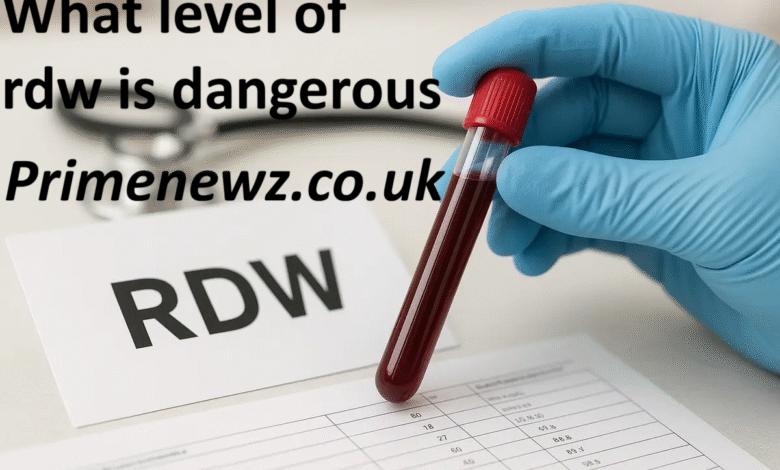What Level of RDW Is Dangerous: Understanding the Alarming Red Flag in Your Blood Test

When you receive What Level of RDW Is Dangerous your complete blood count results, one measurement that often goes unnoticed is RDW—yet it could be one of the most telling indicators of your overall health. Understanding what level of RDW is dangerous can help you catch potential health issues before they escalate into serious problems.
What Is RDW and Why Does It Matter?
Red Cell Distribution Width, or RDW, measures the variation in size of your red blood cells. Think of it as looking at a basket of apples—if they’re all roughly the same size, that’s normal. But if you’ve got tiny crab apples mixed with giant honeycrisps, that variation signals something’s off. Your RDW percentage tells doctors how much your What Level of RDW Is Dangerous blood cells differ in size, which can reveal underlying health conditions ranging from nutritional deficiencies to serious cardiovascular disease.
Normal RDW Levels: What’s the Baseline?
A normal RDW level typically falls between 11.5% and 14.5%, though this range can vary slightly depending on the laboratory. When your red blood cells are uniform in size, it indicates healthy bone marrow function and adequate What Level of RDW Is Dangerous nutrition. This consistency is what doctors look for when assessing whether your blood is functioning optimally.
What Level of RDW Is Dangerous?
An RDW level above 14.5% is generally considered elevated and warrants further investigation. However, the truly dangerous territory begins when your RDW exceeds 15% to 16%. Studies have shown that RDW levels above 15% are associated with increased mortality risk and can indicate serious underlying conditions. Some research suggests that extremely high RDW values—those reaching 18% or higher—represent a significant red flag that demands immediate medical attention. The higher your RDW climbs, the greater the health risks become, What Level of RDW Is Dangerous including increased likelihood of cardiovascular events, complications from chronic diseases, and even reduced life expectancy.
What Causes High RDW Levels?

Elevated RDW can result What Level of RDW Is Dangerous from numerous conditions. Nutritional deficiencies, particularly iron, vitamin B12, or folate deficiency, are common culprits that cause your body to produce red blood cells of varying sizes. Chronic diseases like heart failure, kidney disease, and liver disease frequently elevate RDW levels. Inflammatory conditions, certain cancers, and even chronic infections can affect red blood cell production and lifespan, leading to increased variation in cell size.
Anemia comes in many forms, and different types affect RDW differently. Iron deficiency anemia typically shows high RDW as your body struggles to produce uniformly sized cells without adequate iron. Meanwhile, some genetic blood disorders and bone marrow problems can also push your RDW into dangerous ranges.
Why High RDW Is More Than Just a Blood Issue
Recent research has revealed that elevated RDW is an independent predictor of mortality in various populations. It’s not just about anemia—high RDW has been linked to increased risk of heart attacks, strokes, and complications in patients with existing cardiovascular disease. The marker also appears in patients with chronic inflammatory states, suggesting that persistent inflammation throughout your body affects red blood cell production and survival.
What Should You Do If Your RDW Is High?
If your blood test shows elevated RDW, don’t panic, but don’t ignore it either. Schedule a follow-up with your healthcare provider to investigate the underlying cause. They’ll likely order additional tests to check your iron levels, vitamin B12, folate, and other markers that might explain the elevation. Depending on your symptoms and medical history, further cardiac or inflammatory workups might be necessary.
The good news is that many causes of high RDW are treatable. Correcting nutritional deficiencies, managing chronic diseases more effectively, and addressing inflammation can often bring your RDW back to normal ranges and significantly improve your health outcomes.



